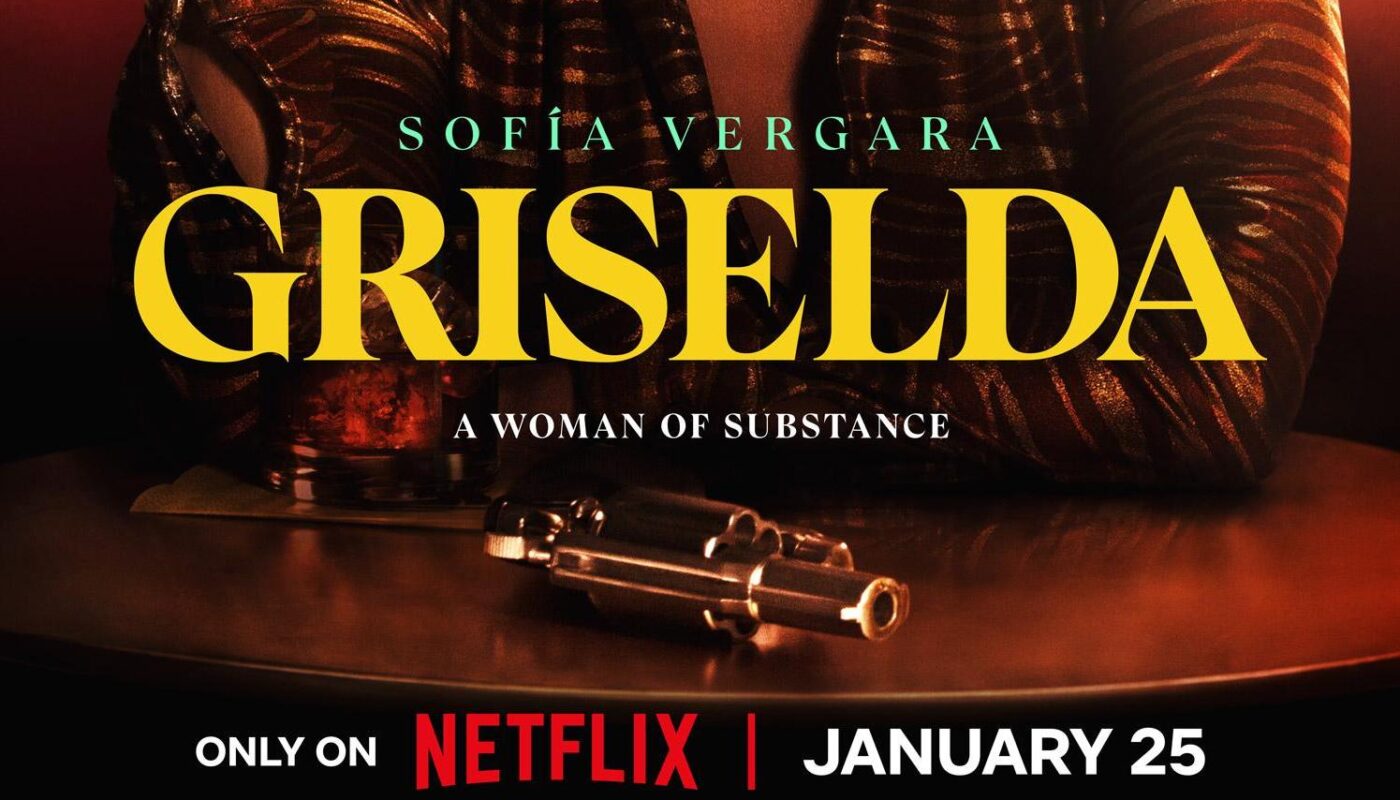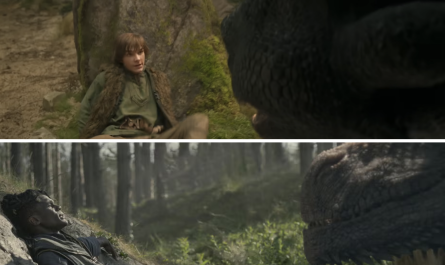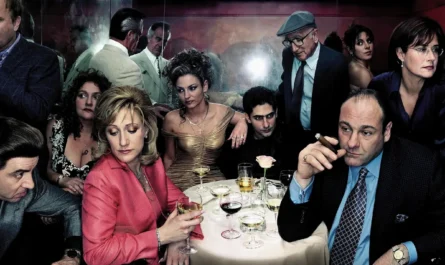Griselda is the latest Netflix show about Griselda Blanco, the powerful Black Widow from Colombia, who caused terror in Miami in the late 70s and made approximately $80 million a month from selling cocaine. The show stars Sofía Vergara, directed by Andrés Baiz, written by Ingrid Escajeda, and produced by Vergara, Escajeda, Eric Newman, and Doug Miro. Newman and Miro had previously produced the critically acclaimed Narcos (2015) and Narcos: México (2018). We can see how their work has evolved. For example, in Narcos, most actors were Mexicans interpreting Colombians with their Mexican accent, Pablo Escobar was portrayed by Wagner Moura, whose performance was outstanding except for his notorious Brazilian accent. In Griselda, we can appreciate how a Colombian woman interprets a Colombian drug dealer.
Newman and Miro produced two more drug dealer shows after their first one because it garnered a lot of views and recognition, making it highly profitable. Additionally, viewers consistently engage with these types of shows. What is it about drug dealers that interests thousands? Viewers exhibit a morbid curiosity about what motivates drug dealers to commit heinous crimes when they may not even harm a bird. This topic is intriguing, especially considering Latinos and Caribbeans represent 8.28% of the global population. Despite this, most of the media representation revolves around crime and violence related to drug dealing.
If we consider that 0.5% of the global population engaged in cocaine use between 2020 and 2021, and Latinos constitute 8.28% of the population, millions more are affected by drug dealing in some way. Whether it is due to substance abuse or growing up in a country with lax law enforcement, where many gangsters roam unpunished, it creates a significant curiosity about why these occurrences persist. Why has it been happening for decades? The largest cartels are in Colombia and Mexico, and even though many people are neither drug consumers nor dealers, their daily lives are still impacted by this $32 billion industry.
Documentaries, movies, and shows about drug trafficking are striking because they construct an answer to our concerns. However, we must keep in mind storytelling distorts facts to make them more compelling and dramatic. We cannot assume everything we watch onscreen is factual and it may even contribute to Narcoculture which is also harmful.
Narcoculture is a subculture that idolizes the lifestyle of drug dealers through music (narco-corridos), television, and mainstream media. It portrays powerful drug lords as “astute” individuals who overcame their impoverished backgrounds, triumphing over struggles, and it constructs a narrative highlighting how they achieved success through their merit. However, it overlooks the harm they cause directly and indirectly to thousands of people. For instance, Griselda Blanco was suspected of murdering 40 people across the US, Pablo Escobar was implicated in approximately 4,000 murders, while Joaquín “El Chapo” Guzmán is estimated to be responsible for 70,000 deaths. Nevertheless, upon his capture by authorities, several individuals expressed their support on social media, advocating for his “release.” When his son was apprehended, people defended him by praising his looks.
Despite the captivating nature of Narcos-themed shows, we cannot ignore their role in normalizing the lifestyles of drug dealers by exposing us to their way of life. Most screenplays follow the conventional narrative of “the good cop versus the cunning and malevolent drug trafficker,” typically presented from either the DEA’s or the drug dealer’s perspective, with minimal focus on the victims’ point of view. They rarely delve into the pain and struggles experienced by individuals growing up and living in a narco-state. Even now, this show is being promoted on social media with the hashtag #TeamGriselda. It often depicts criminals outsmarting one another, mocking incorruptible authorities, perpetuating a conflict that has persisted for decades, and exacerbating issues related to justice, peace, and social welfare. Furthermore, it fails to address the link between drug dealing with animal trafficking, and more disturbingly, human trafficking and slavery. For example, Narcos shows from Hollywood ignore cases like Marisela Escobedo’s, and they always show Americans as the heroes who want to bring these villains down, completely disregarding the fact that drug money saved America’s financial crisis in 2008.
Who was Griselda Blanco?
Griselda Blanco grew up in a period of violence called La Violencia in Colombia, which lasted for a decade. Her first crime was at the age of 11 when she kidnapped and murdered a boy after her ransom attempt failed. Later in life, Blanco met Carlos Trujillo, who made a living falsifying documents and trafficking humans. They got married and had three kids, and by the 70’s Trujillo died and the rumor of Griselda being behind his death started to spread. Blanco then married Alberto Bravo, a drug smuggler, who built a cocaine empire based in New York along with Griselda. They designed special underwear to smuggle drugs across borders. Bravo was killed in 1975 and Blanco later claimed she shot him in the mouth. His death proclaimed the image of Griselda as the Black Widow, the wife who murdered her husbands.
At her peak, Griselda Blanco killed one of her assassins because he had struck one of her sons. Jorge Ayala, another of her assassins, recalled, “At first, she was real mad because we missed the father, but when she heard we had gotten the son by accident, she said she was glad; they were even” (Ayala in Parissa 2024). All of her children witnessed violence, and in 1983, her third son witnessed the killing of his father, Dario Sepúlveda, by order of Blanco in Colombia.
Blanco spent 15 years in prison and was deported to Colombia in 2004. She continued to live a quiet life in El Poblado, Colombia, until she was shot by assassins on a motorcycle on September 3, 2012, at the age of 69.
The show deviates from reality as it paints the narrative of the “empowered woman” who achieved success, framing it as a tale reminiscent of a woman breaking through the corporate world. For example, it portrays her as a caring mother who prioritizes her children or any children, but, she displayed no concern for children, not even for the two-year-old accidentally murdered when she ordered the killing of one of her assassins. Netflix constructs the narrative of her “being a woman” with “womanly” worries, such as “motherly” concerns. However, this portrayal is far from the truth and distorts the story as one of a mother and businesswoman attempting to balance personal and professional life.
She likely never prioritized the care of anyone, not even innocent children. This is particularly egregious when considering the detrimental impact on her brain’s health, having not only been exposed to a violent environment but also grown up in one. Given that 75% of mental illnesses occur by age 20, one of the significant driving forces behind Blanco’s actions was a mentally ill brain with violent tendencies and no remorse for anyone, contrary to the show’s depiction. A brain exposed to high levels of cortisol can lead to a decline in hippocampus volume, the amygdala, and the prefrontal cortex. Critical abnormalities in the limbic system, including structures of the amygdala, implicate impulsive aggression and violence. For example, patients with borderline personality disorder exhibit increased activation of the amygdala when exposed to negative pictures compared to a resting state.
In the show, Griselda is depicted as impulsive, violent, and aggressive. However, her behavior is primarily attributed to drug addiction and the ambition to attain power and expand her business. Nonetheless, the show fails to delve into how her ambition and addiction were not only propelling her business growth but were also linked to an unhealthy mental state stemming from a violent upbringing. Furthermore, her business is portrayed as if she started almost from nothing, when, in reality, she didn’t start over but continued the already successful drug trafficking she had been involved in with her second husband.
As viewers, it is crucial to remember that these depictions are not entirely factual representations of drug trafficking. To a certain extent, elements are romanticized and heightened to present Griselda’s decisions and strategies as those of a brilliant and astute individual. The aim is not to moralize the show or anyone but to emphasize the importance of recognizing that mainstream media and Hollywood productions do not present the complete truth. Many viewers absorb the information without discretion, accepting every scene as truthful by default. Productions exaggerate historical aspects to showcase the fabricated victories Narcos experienced before the downfall of their empires for dramatic and profitable purposes.
In this article, the intention is to encourage the public to question the content consumed and trust reliable sources. Most importantly, it is crucial to refrain from idolizing violent individuals who have detrimental effects on societies.
References
Am J Psychiatry. Author manuscript; available in PMC 2014 Sep 27.Published in final edited form as:Am J Psychiatry. 2008 Apr; 165(4): 429–442. Published online 2008 Mar 17. doi: 10.1176/appi.ajp.2008.07111774
Djangi, Parissa. (2024). The real-life rise and fall of Griselda Blanco- cocaine ‘godmother’ of the ‘70s. National Geographic. Available in https://www.nationalgeographic.com/history/article/griselda-blanco-miami-cocaine-70s#:~:text=In%201983%2C%20she%20probably%20ordered,40%20murders%20across%20the%20U.S.
ECLAC – United Nations. (2022). The World Has 8 Billion People, 662 Million of Whom Live in Latin America and the Caribbean. ECLAC-United Nations. Available in https://www.cepal.org/en/news/world-has-8-billion-people-662-million-whom-live-latin-america-and-caribbean
Elflein, John. (2023). Number of cocaine users worldwide from 2012 to 2021, by region. Statista. Availabe in https://www.statista.com/statistics/264738/number-of-worldwide-users-of-cocaine-by-region/
National Academies of Sciences, Engineering, and Medicine; Division of Behavioral and Social Sciences and Education; Health and Medicine Division; Committee on Law and Justice; Board on Children, Youth, and Families; Board on Global Health; Forum on Global Violence Prevention. The Neurocognitive and Psychosocial Impacts of Violence and Trauma: Proceedings of a Workshop—in Brief. Washington (DC): National Academies Press (US); 2018 Apr 6. Available from: https://www.ncbi.nlm.nih.gov/books/NBK498651/
Syal, Rajeev. (2009). Drug money saved banks in global crisis, claims UN advisor. The Guardian. Available in https://www.theguardian.com/global/2009/dec/13/drug-money-banks-saved-un-cfief-claims





